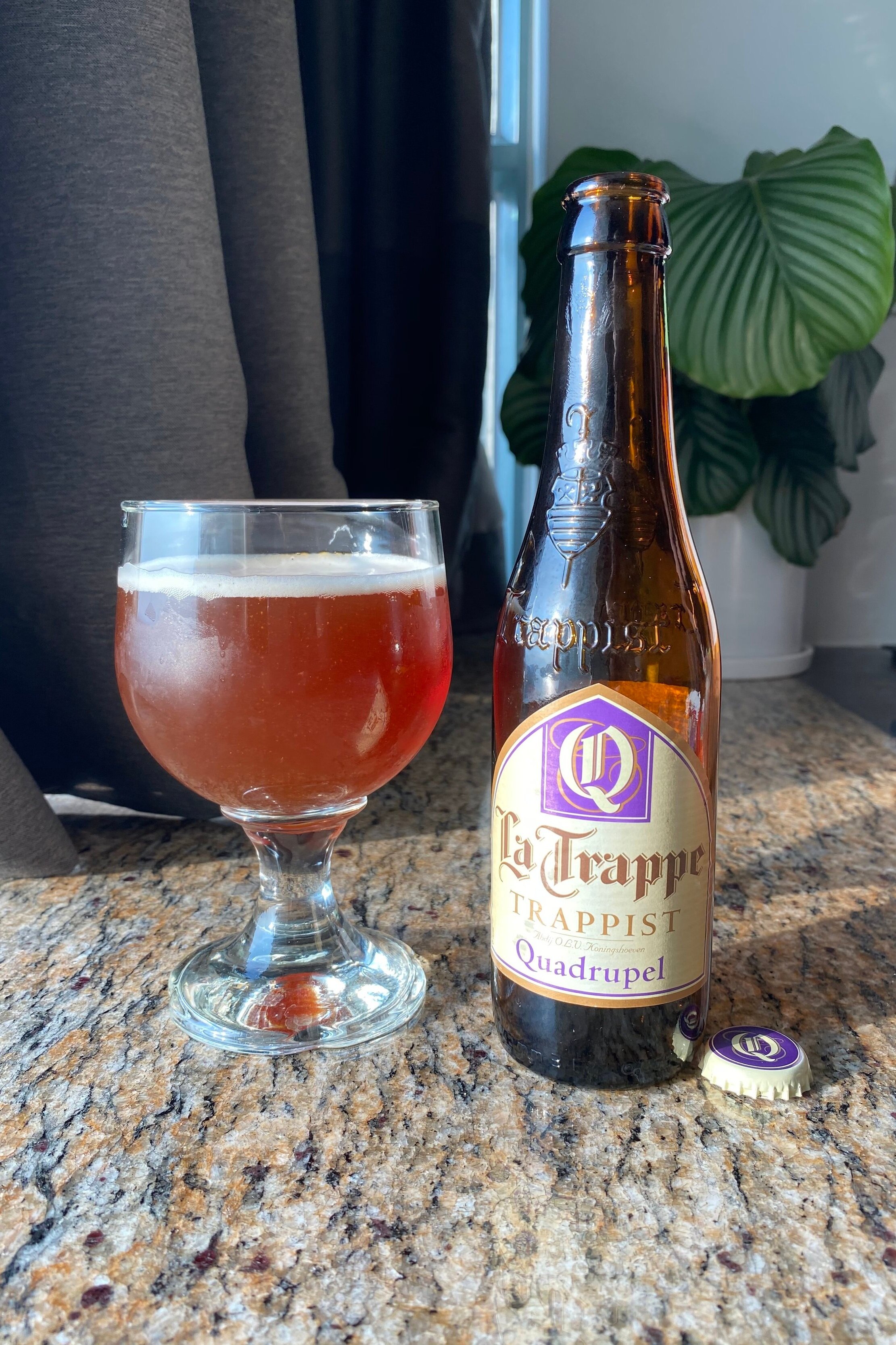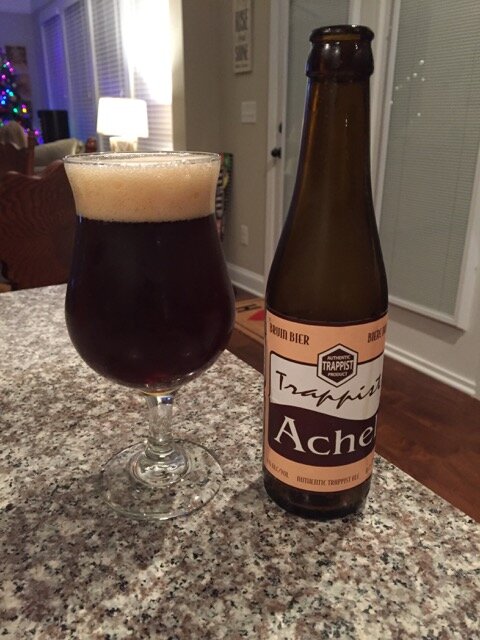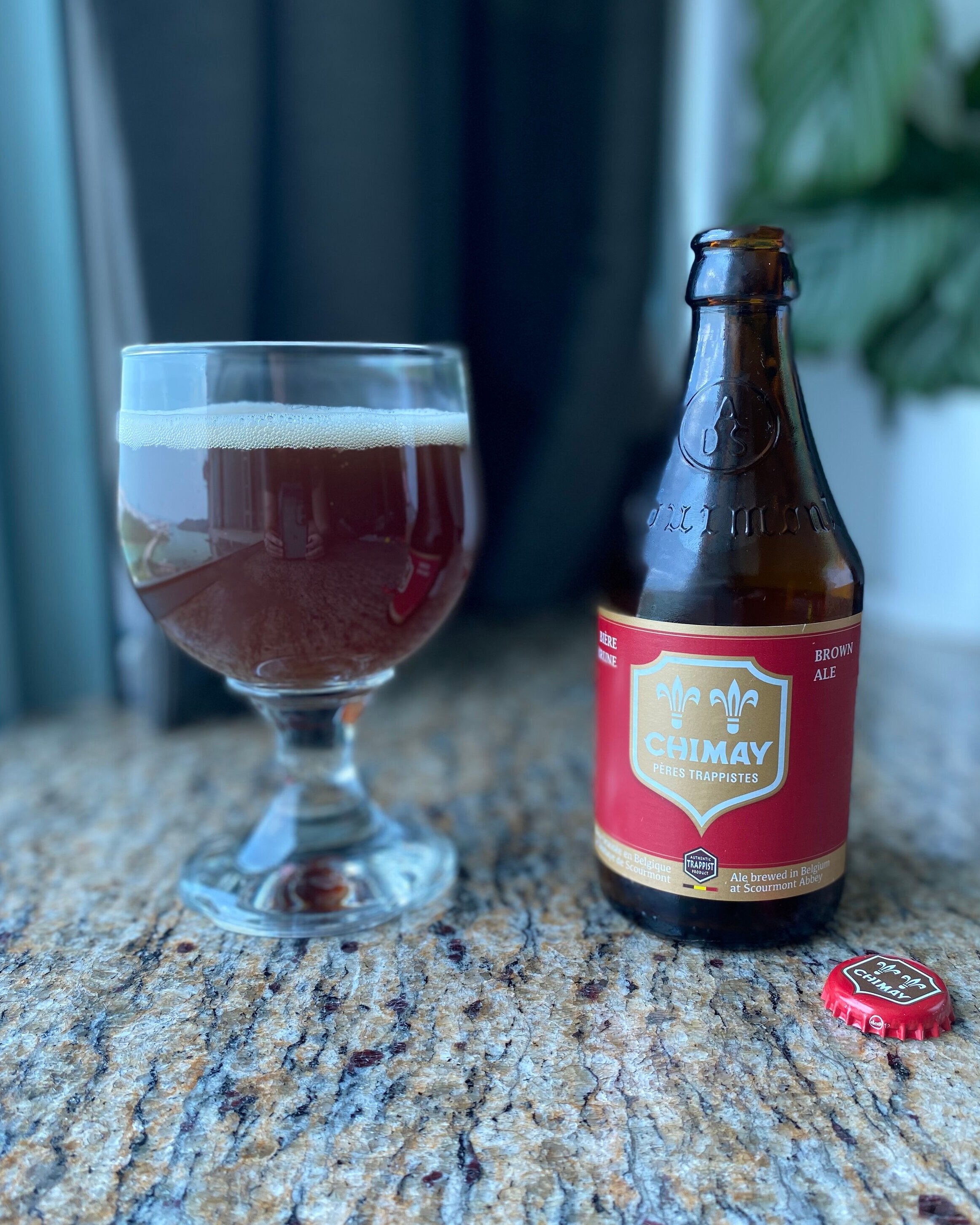Belgian beer is certainly special, with many of their traditional brands and styles being truly unique in terms of their flavor, ingredients and production methods. Most Belgians will argue that they have the best beer in the world and while I won’t be supporting that argument in this post I will agree that they have some amazing beers that simply must be on everyone’s list of beers to try. At the mention of Trappist beer one may conjure images of old, grey, balding monks in robes, stirring wooden paddles in cauldrons and happily downing hefty glasses of ale like Friar Tuck. In this post I would like to give an introduction to Trappist beer in terms of its history, rules, brands, and how they are different from other “abbey ales”.
“La Trappe” is actually from the Netherlands, but it carries the original name of the monastic sect that broke off from the Benedictine monasteries. It is indeed a Trappist beer, but the focus of this post is on the Belgian Trappist beer.
Brief History of Trappist Brewing
Brewing was largely a domestic operation before there was a shift to commercial production at monasteries. In 530 AD the Rule of Saint Benedict set up guidelines for monks living in monastery that required them to be self-sufficient and to provide hospitality to visitors in the form of food, drink and shelter. In this decree, monks were allowed to brew and sell beer in order to cover operational costs. This practice was reinforced and supported by Emperor Charlemagne, who ruled the Holy Roman Empire from 742 - 814. These monastery breweries led the way with large-scale production of beer, serving as a model for commercial breweries that would emerge in the 12th century. So up to this point we’ve got Benedictine monks brewing beer……..but Christian history loves a good reformation when a portion of the followers aren’t pleased with how things are going, so eventually there were some separation amongst the monasteries.
In 1098 the Order of Cistercians of the Strict Observance branched off to continue following the Rule of Saint Benedict, citing moral laxity of the Benedictines as the reason for the split. In 1656 there was further reform when a group broke off at the Cistercian monastery of La Trappe in France. These monks would come to be known as “Trappists” - a name that still stands today. Besides manual labor, silence and seclusion, the Trappists also went vegetarian.
Brewing would continue on a small scale largely unhindered until the French Revolution in 1790. During this transition many of the monastic breweries were forced to close and their equipment dismantled. Most monks fled the persecution to parts of Eastern Europe until it was safe to return and revive their brewing practices. Some of the monasteries were located in present-day Belgium, but it should be noted that it wasn’t officially a country until 1830.
Shortly after Belgium’s independence from the Netherlands, familiar Trappist breweries start popping up, beginning with Westmalle in 1836 and Westvleteren in 1839. Monks from these monasteries would expand to found Achel in 1852, Chimay in 1862, and Rochefort in 1899. Rounding out Belgian Trappist breweries was Orval in 1932. These breweries have weathered world wars and other set-backs to stay alive and continue to share their unique beers with the rest of the world.
International Trappist Association
While many abbeys and monasteries have been brewing beer over the last two centuries, not all are considered to produce “Trappist beer”. Throughout the 20th century there have been multiple incidents when Trappist breweries went to court against secular breweries that were selling beers labelled as “trappist” in order to protect their image. In 1962 a trade court awarded Trappist breweries claim over their “Trappistenbier” trade labels to distinguish themselves from other monasteries. Today, in order to use the “Authentic Trappist Product” logo, three rules must be followed:
product must be made within the walls of a Trappist abbey
product must be made by or under the supervision of the monastery community
most of the profit must be spent on social work
Look for the “Authentic Trappist Product” logo for officially recognized Trappist beer.
Today there are 14 Trappist abbeys that are part of the “International Trappist Association” and 12 of them are allowed to use the “Authentic Trappist Product” logo. This post will focus on the six members in Belgium, including:
Saint Benedictusabdij de Acheles Kluis — Achel
Abbaye Notre-Dame de Scourmont — Chimay
Abbaye Notre-Dame de Saint-Remy — Rochefort
Abbaye Notre-Dame d’Orval — Orval
Abdij der Trappisten van Westmalle — Westmalle
De Sint-Sixtusabdij van Westvleteren — Westvleteren
Besides the six Belgian members there are also two in the Netherlands (La Trappe & Zundert) and one each in Austria (Stift Engelsvell), Italy (Tre Fontane), the USA (St. Joseph’s Abbey), and England (Tynt Meadow). Several of these have been added to organization since 2012 by successfully applying to the International Trappist Association.
The Breweries
Belgian beer styles are distinct from other English and German styles in that they tend to be stronger in flavor and alcohol content. Trappist breweries have led the way, introducing “dubbels”, “tripels” and “quad’s” that are full-flavored, full-bodied, and dangerously high in ABV. Belgium has never really cared about all brewing the same style, so each Trappist brewery features their own unique recipes without worrying about how they compare to the rest. Unlike many craft breweries today that feel the pressure to offer a pale ale, pilsner, IPA, and sour beer, the traditional Trappist breweries aren’t confined to those narrow styles. In this section we’ll look at the six Belgian Trappist breweries in terms of the beers that they brew and anything else that stands out.
Achel
Achel sits in northwest Belgium, literally on the border with the Netherlands. The monastery dates to 1844 when monks from Westmalle established it and put in malting and brewing operations by 1852. They brewed mostly privately until the brewery was destroyed in World War I, after which they failed to resume operations until 1998 with help from both Westmalle and Rochefort. In fact, their recipes are heavily influenced by monks/brewers from these two monasteries so you may notice a resemblance.
The “Blond 8” or “tripel” from Achel.
Achel offers a “Blond 5”, “Bruin 5”, “Blond 8” (tripel), “Bruin 8”, and “Bruin Extra” (christmas beer). They use belgian malt, whole flower Saaz hops, and yeast from Westmalle. Also of note, they use bottle conditioning for all of their beers which are packaged off-site.
The “Bruin 8” from Achel - somewhere between a Belgian “dubbel” and “dark strong ale”.
Chimay
Arguably the most recognized Trappist brand (whether you knew it or not) is Chimay, as they were the first to sell beer off-site, the first to bottle and the first to push for the Trappist mark. Today they export around 35% of their production and are mainly known for three beers: Chimay “Red”, “White” and “Blue”. The Chimay Red, aka “Premiere”, is a dubbel. The Chimay White, aka “Cinq Cents”, is a tripel. The Chimay Blue, aka “Grande Reserve”, is a dark strong ale.
The Abbaye de Scourmont was founded in southern Belgium (walking distance to the border with France) by monks from Westvleteren in 1850, with beer production following in 1875. They have bounced back from two world wars, making improvements to their equipment and processes along the way to apply modern, commercial techniques (e.g. hop extracts, centrifuge) in the production of their famous recipes. As with other Belgian brewers, they use bottle conditioning at an off-site bottling plant.
Chimay is typically the easiest Trappist brand to find with their three signature offerings typically referred to as “Red” (pictured), “Blue” and “White”.
Orval
The oldest Trappist monastery was originally founded in 1070 by Benedictines before being abandoned and reestablished by Cistercians in 1132. Brewing began in 1628 when it was under Trappist direction. It would be destroyed by the French in the 1790s before finally being rebuilt in 1926.
Unique to Orval is the fact that they only brew one beer (referred to as “Orval” of course), which doesn’t neatly fall into any recognized categories such as blond, dubbel, tripel, dark strong, etc. The original brewers were German and Flemish and came up with a dry-hopped beer fermented with Brettanomyces to give it a unique character. Also of note is that after re-fermentation in the bottle the beer has a target carbonation level of around 5 volumes (twice that of most ales)!
The Abbaye d’Orval produces only one beer. Their logo depicts a trout with a golden ring in its mouth - a nod to the legend of Princess Mathilda, who lost her wedding ring in a lake in the valley, prayed for its return, and subsequently had it brought to her by a trout! She then dubbed the area the “Valley of Gold”, which is where the abbey stands to this day.
Photo credit: Brouwerij X (www.breweryx.com - @brouwerijx on Instagram)
Rochefort
The history of this site dates to 1230 when nuns founded the original abbey, later taken over by Cistercian monks in 1464. Brewing records indicate that production began in 1595 before being halted in the wake of the French Revolution. It was later revived by monks from Achel in 1887, with modern brewing commencing in 1899. Besides the initial influence of Achel, Rochefort also has an intertwined history with Chimay, who helped them to rebuild after WW! before outcompeting with them in their local market. In a move that goes against the grain of modern capitalism Chimay offered training for their brewers in order to improve their recipes and even gifted them their house yeast to get jump-started.
Today Rochefort offers three main products: Rochefort 6 (red cap), Rochefort 8 (green cap), and Rochefort 10 (blue cap). This line-up reflects similar recipes and processes - only with differing strengths.
Rochefort 8 is a 9.2% beer made from pilsner malt, caramel malt, white and dark sugar.
Photo credit: Brouwerij X (www.breweryx.com - @brouwerijx on Instagram)
Westmalle
Monks fled France and landed at what is now the Abbij der Trappisten van Westmalle in 1802 before setting up brewing operations in 1836. They are considered the first Trappist brewery to start production in Belgium (in the modern sense, at least).
They mainly make two beers, a “dubbel” and a “tripel”, although they also produce an “extra” beer made just for monks. They are best known for their “Tripel”, accounting for 60% of their sales. They are also known for their generous philanthropy to other monasteries and organizations, maintaining the integrity of the Trappist way.
Westvleteren
Lastly we have Westvleteren who have been around as a Trappist monastery since 1831, with brewing beginning in 1839. The monks at the Saint Sixtus abbey try to keep a low profile, avoiding advertisement of any kind - even their bottles are unlabeled except for the cap which indicates the brand.
They currently offer “Westvleteren Blond’, “Westvleteren 8” and “Westvleteren 12”, differentiated by different colored caps. They gained notoriety in the past decade when beer enthusiasts rated the Westvleteren 12 the “Best Beer in the World” by Ratebeer.com in 2012. The monks don’t want to sell to distributors, but that hasn’t kept collectors from buying from the front gate and sending them to beer lovers around the world.
During a period of renovation after WWII they licensed out the Saint Sixtus name to be brewed on contract for them. This might explain why the St. Bernardus line of “abbey ales” taste so similar to Trappist beer. In the next section we’ll compare abbey beers and Trappist beer to understand the difference.
The only photo that I can find of Westvleteren beer is this one from circa 2011 in Oostende, Belgium. I was able to snag the elusive “Westvleteren 12” from a local shop to see if it truly was “the best beer in the world”. It was a good beer. Best in the world is a funny notion to me, however.
Abbey Beers
Aside from Trappist beer, which carries the certified mark to distinguish themselves from other breweries, there are a host of breweries that are making beer similar in style to those produced by Trappists. Collectively known as “abbey ales”, they are produced by Belgian breweries who can satisfy the following criteria, set forth by the Belgian Brewers organization in 1999:
have a link with either an existing abbey or a former one
pay royalties to support the abbey, or a charity that represents the abbey
the abbey maintains control over the marketing material
There is no guarantee that abbey ales are made within the walls of an abbey, as is the case with Trappist beer, and so there is a mix of independent and multinational breweries that are involved in the production of abbey ales. The beers are still of a high quality and strongly resemble the Trappist ales in the market - it’s basically a marketing tactic to associate the brand with the monastic brewing tradition that consumers find appealing. While the list is ever-evolving due to changes in who meets the criteria, the following is a list of abbey ales along with the brewery that produces them:
Affligem (Affligem, Heineken)
Bonne Esperance (Lefebvre)
Bornem (Van Steenberge)
Cambron (Silly)
Dendernonde (Block)
Ename (Roman)
Floreffe (Lefebvre)
Grimbergen (Alken-Maes, AB-InBev)
Keizersberg (Van Steenberge)
Konigshoeven (Konigshoeven, Bavaria)
Leffe (Hoegaarden-Artois, AB-InBev)
Maredsous (Moortgat)
Postel (Affligem, Heineken)
Ramee (du Bocq)
St. Feuillien (St. Feuillien)
Steenbrugge (Palm)
Tongerlo (Haacht)
Val-Dieu (Val-Dieu)
In addition to this list of certified abbey beers, there are a few more worth mentioning that are non-certified abbey beers:
Corsendonk
Kasteelbier
St. Bernardus
Tripel Karmeliet (Bosteels, AB-InBev)
Resources
Hieronymus, Stan. Brew Like a Monk: Trappist, abbey, and strong Belgian ales and how to brew them. Brewers Publications: Boulder, CO, USA. 2005.










